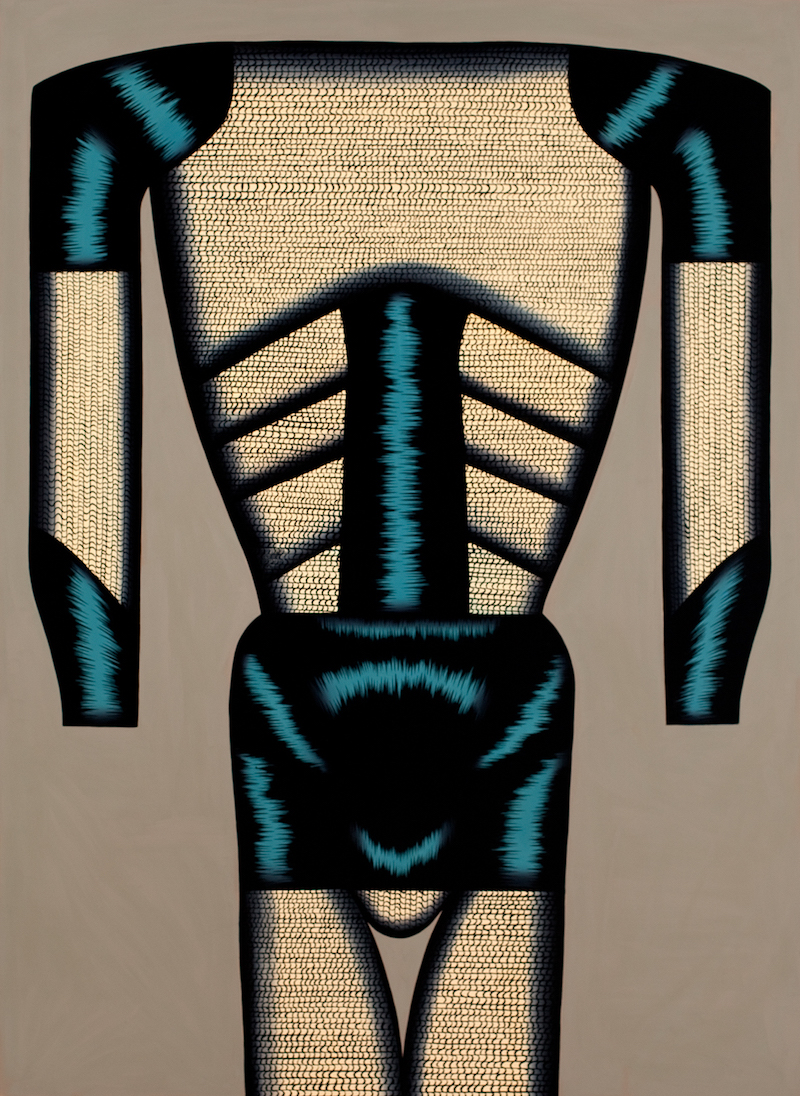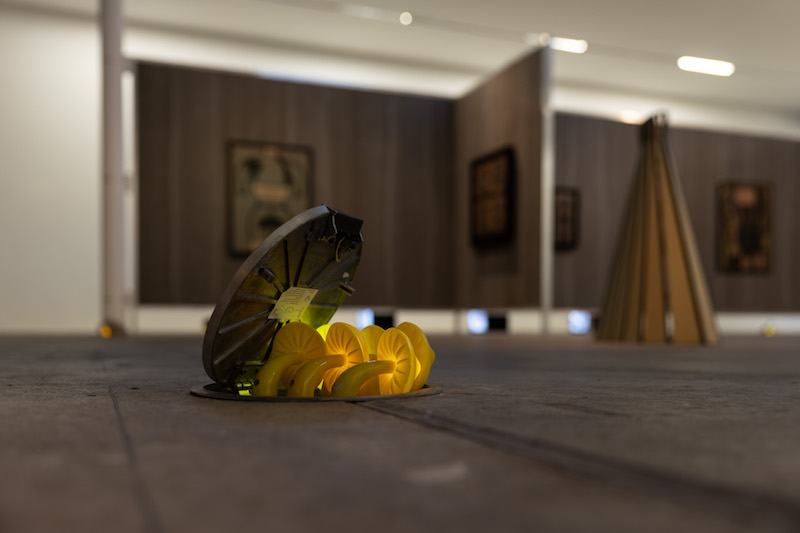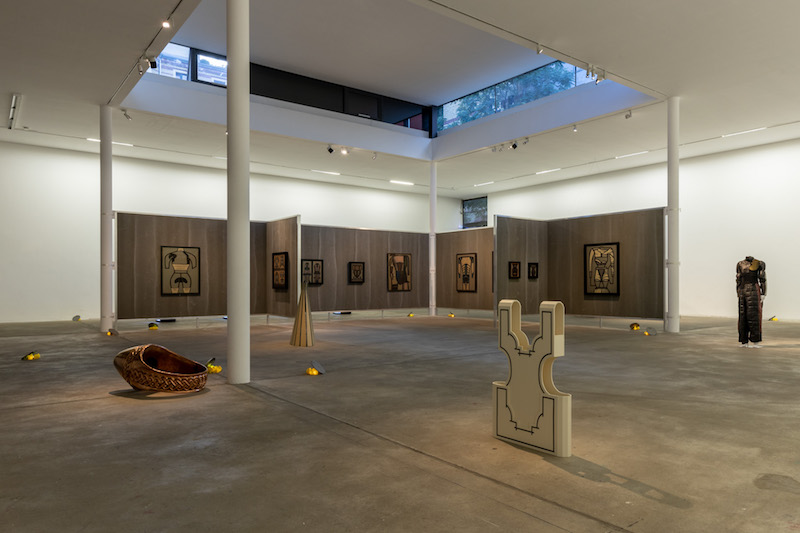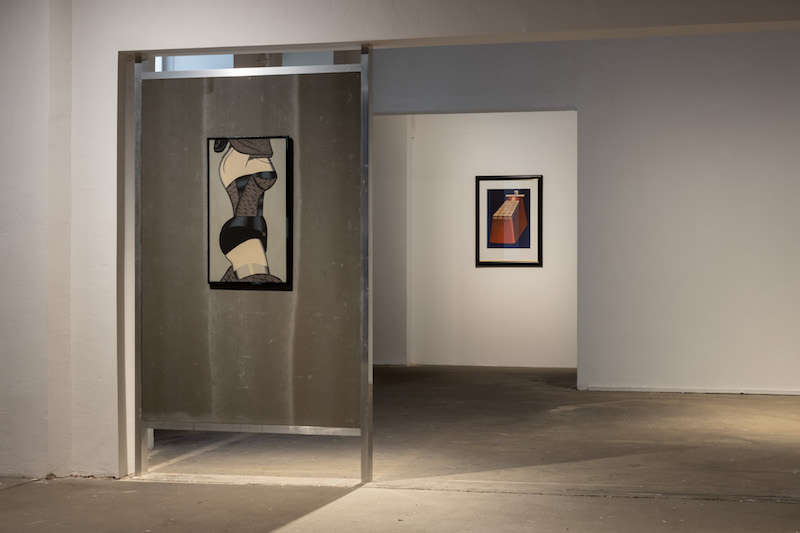Article by Faye Campbell // Oct. 17, 2019
Highly stylized, simplified, yet warped and bizarre, Christina Ramberg’s works depicting corsets—now exhibited at KW Institute for Contemporary Art—are symbolic and evocative of control, regulation and the influence of social conventions in shaping identity. Ramberg, a leading presence in the Chicago Imagists, was active within the creative community from the 1960s up until the mid-1990s. The title of the show, ‘The Making of Husbands: Christian Ramberg in Dialogue,’ refers to the BBC film ‘Husbands’ by John Cassavetes, which explored the construction of gender performance, seeking to reveal the contrived nature of stereotypical, normative roles such as ‘the husband.’ Through the dialogue between Ramberg, the additional exhibited artists and the space itself, the interdependence between the body and the world around it is articulated, as they explore how hegemonic social norms are re-inscribed in daily rituals.

Christina Ramberg: ‘Tight Hipped,’ 1974 // Copyright the Estate of Christina Ramberg, Courtesy Collection of the Madison Museum of Contemporary Art, The Bill McClain Collection of Chicago Imagism.
A childproof gate blocks the threshold of ‘The Making of Husbands: Christina Ramberg in Dialogue’ and, at first, we are left slightly disoriented: “Where do we go? Where does the exhibition begin?” ‘GATES’— a commissioned work by artist Ghislaine Leung—immediately implicates the audience. We are expected, or perhaps challenged, to transgress boundaries to physically engage with the art, and to open the gate in order to enter the exhibition. We are thus thrust into a conversation about dynamics of entrance, perceived permission by invisible authority, and spatial constructions; by installing the childproof gates throughout the exhibition, the artist—and by extension, the audience—is subverting the ingrained norms of behaviour within the codes of the gallery. The reluctance—or, perhaps, the readiness—of the viewer to interact with the art, to reach out and open the gate, speaks to institutional histories of regulated space and access, like signs that say “please stand back” and “do not touch.”

Ghislaine Leung: ‘SHROOMS’, 2019, Installation view of ‘The Making of Husbands: Christina Ramberg in Dialogue’ // Image courtesy of the artist and ESSEX STREET, Photo by Frank Sperling
Leung is also represented with her work ‘SHROOMS,’ small clusters of LED mushrooms that sprout from the ground. The installation of the works ensures that the audience is constantly cognizant of their movements and their body in the space, as they must watch both the space ahead of them and the ground to make sure that they do not step on these small luminescent fungi.
Ramberg’s corsets are carefully arranged throughout the exhibition; with several in the first room, sketches in the next and a large display of her torsos organized in the centre of the main gallery space, maintaining a continuous dialogue with the other artists. These torsos, boldly outlined and contrasting with the background, are contorted into strange shapes and extreme positions, the ultimate result being a compressed and sharply delineated androgynous form. As the other works gravitate around Ramberg’s works—both thematically and physically—we are left to navigate the space around the restricting element of the corsets; being controlled by extension, our movement instead of our flesh is regulated.

‘The Making of Husbands: Christina Ramberg in Dialogue’ installation view at KW Institute for Contemporary Art, 2019 // Photo by Frank Sperling
Playing in a line of small televisions is Kathleen White’s ‘The Spark Between L and D,’ the artist’s personal response to the AIDS crisis; the piece sees White outfitted as a nurse, beating herself up, licking her own blood off her fingers then covering herself with gauze and gagging herself with bandages, singing ‘On Broadway’ the entire time. It is disturbing and, at times, difficult to watch, as she subjects her body to this visible abasement, using it as a monument of remembrance and loss. On the opposite side of the main gallery space, a large automated door mounted on the wall beckons us. Hans Christian Lotz’s electric sliding door makes the audience aware of their movements; as we get closer or further away, it opens and closes, yet it leads nowhere.
Though, collectively, the artists shown in conjunction with Ramberg are in dialogue with her, the works as a whole and their curation also implicate the audience, bringing us into conversations about being and becoming: what is enabled and what is constricted within the framing conventions that shape our identities.

Christina Ramberg: ‘Black Widow’, 1971, Courtesy of Illinois State Museum, Illinois Legacy Collection; Konrad Klapheck: ‘Der Mann in der Frau (L’homme dans la femme)’, 1986, Courtesy Private Collection, installation view // Photo by Frank Sperling
Exhibition Info
KW INSTITUTE FOR CONTEMPORARY ART
Group Show: ‘The Making of Husbands: Christina Ramberg in Dialogue’
Exhibition: Sept. 14, 2019 – Jan. 05, 2020
Auguststraße 69, 10117 Berlin, click here for map


























